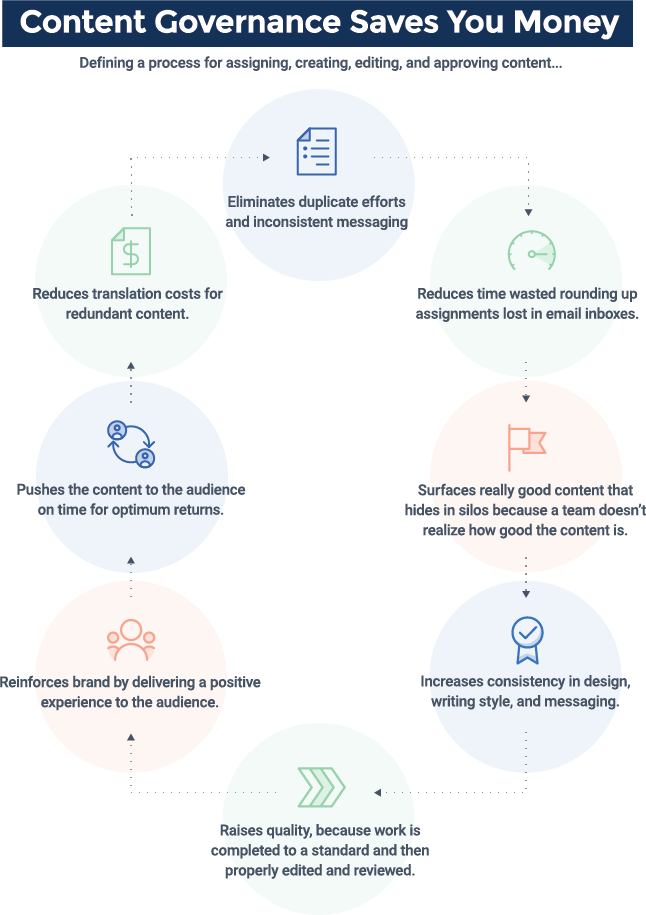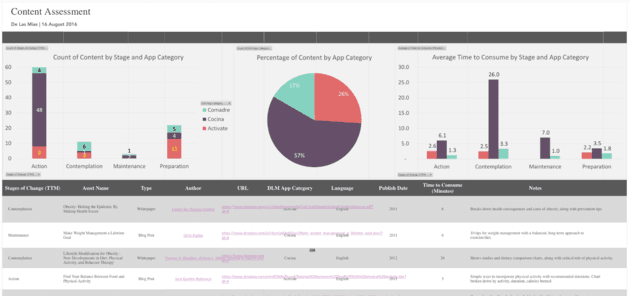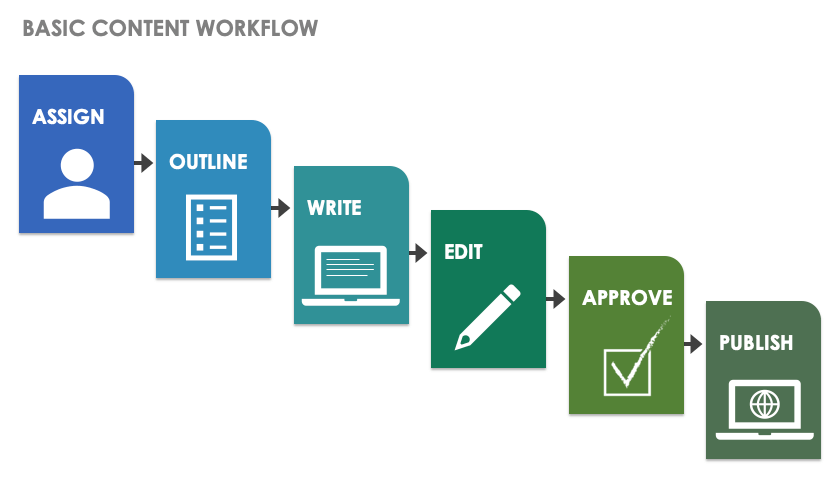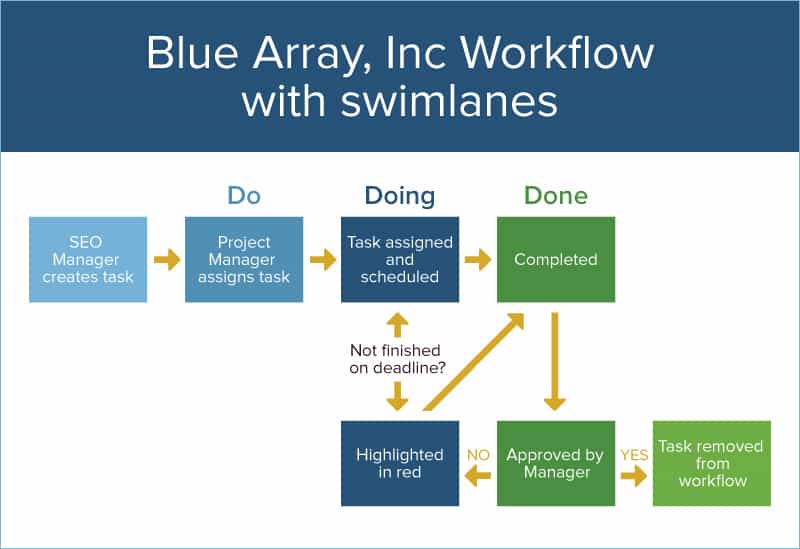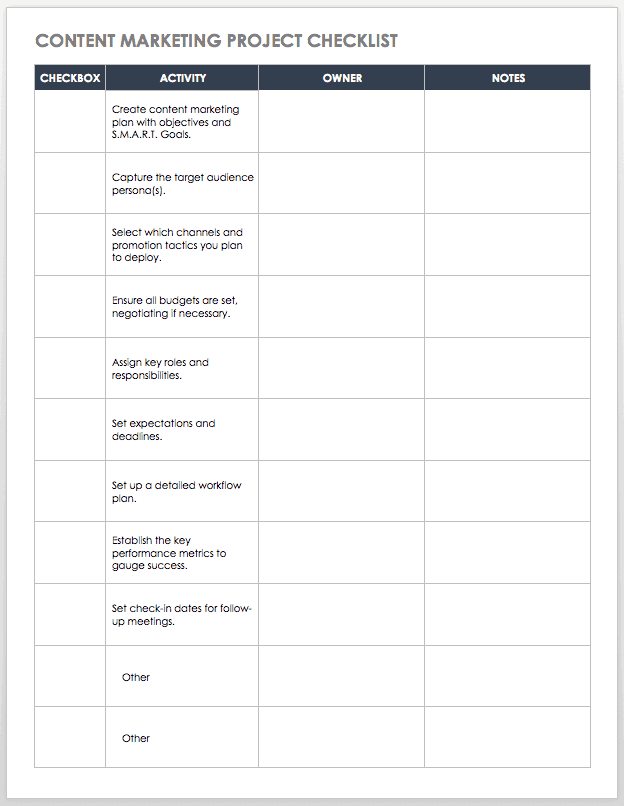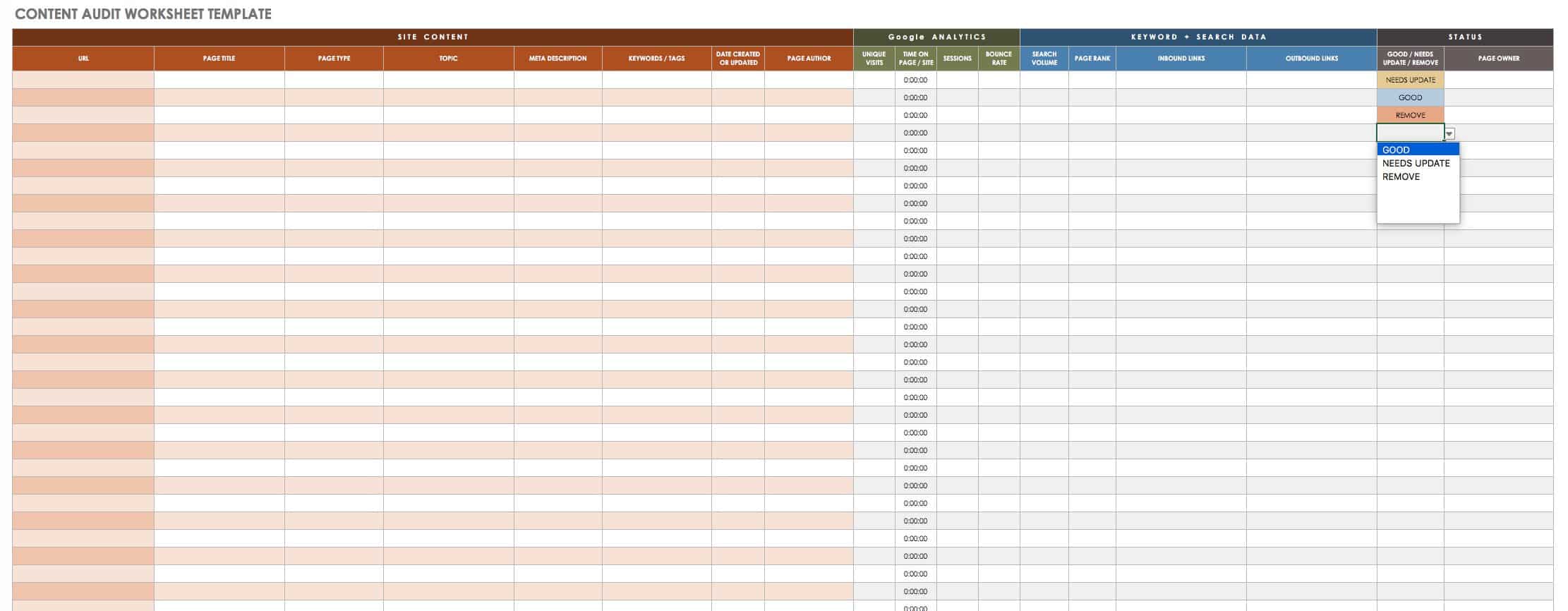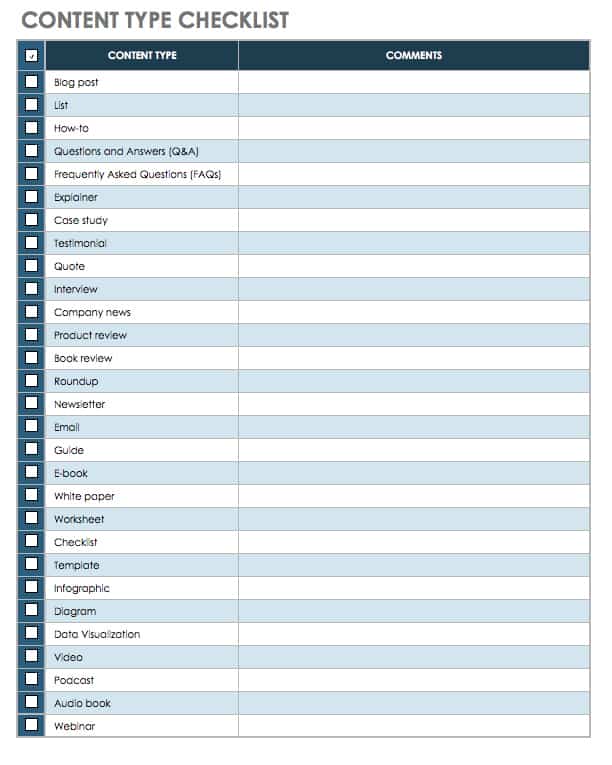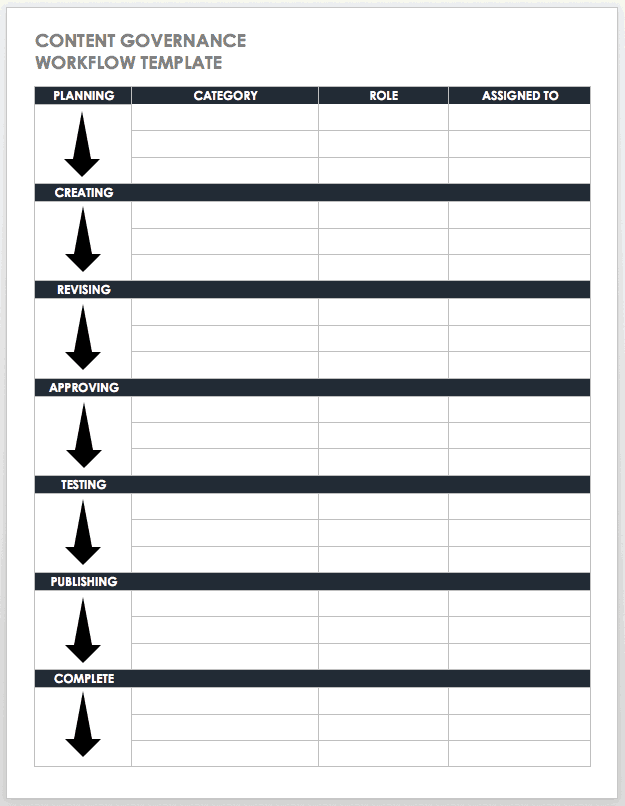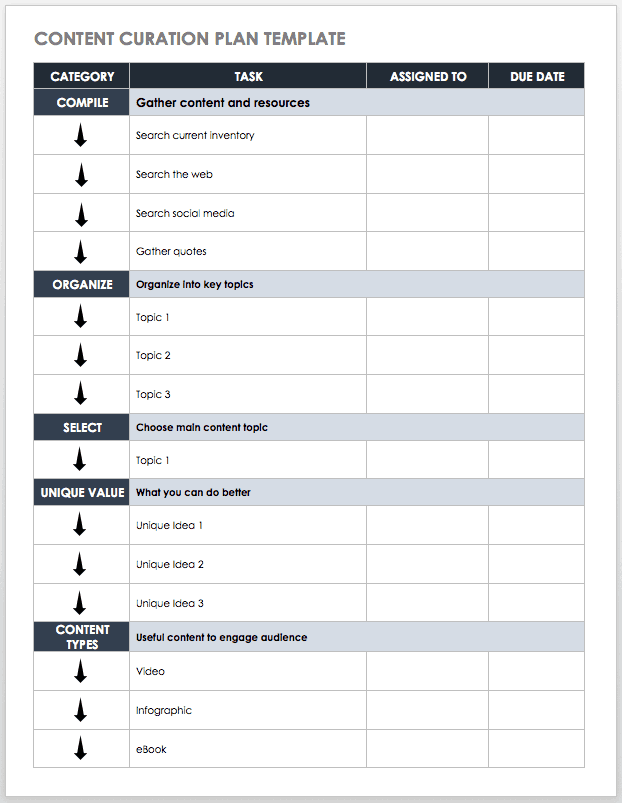What Is Content?
You may think of content as focused solely on marketing material. However, content extends to all end-user documents, including manuals, help, and records used internally by organizations, such as SOPs, and pertains to all channels.
"Content is anything creative, including design or writing,” says Angela Earl, Vice President of Global Marketing at RFPIO, founder of The High Bar Media, and host of the MarTalk Podcast. “It's the look and feel, the aesthetic, and the copy. So we separate those into two types of content. But both are still content."
What Is Content Governance?
"Content governance is the framework and processes you use to create, store, and maintain your content," continues Earl. Content governance guides the daily practices of content creation and publishing so that the work aligns with your company's content strategy.
Robert Rose is the Chief Strategy Officer at The Content Advisory of The Consulting & Education Group of the Content Marketing Institute. He explains content governance this way: "In the simplest sense, content governance is a designed system that regulates the creation, management, and measurement of content in the business. It helps to create a more consistent, effective, and, sometimes, efficient content operation. Ultimately, good content governance should be judged by how well it helps practitioners deliver better business outcomes."
A content governance framework assigns ownership to people within the organization to ensure that content creation and publishing does not occur at random. Well-considered output adds value to your organization, and it educates or entertains customers while reinforcing your brand.
Guidelines also keep your organization from damaging its reputation or getting sued. "Content governance is also about any potential legal implications once you release the content," explains Lilia Stoyanov, fintech expert, CEO of Transformify, and professor at Zigurat Business School. "Published content cannot come back. Within seconds, it is already spread, especially if it is news or is controversial or a little bit scandalous. Even if later you decide to take back this content, the damage is done."
A content governance framework may be simple or elaborate, depending on the context of the organization. It should detail the processes and human interactions necessary to produce a steady pipeline of quality content. When an organization establishes a governance framework, it then embarks on enterprise content management (ECM). In ECM, organizations manage all documentation and its content lifecycle according to a predetermined process.
Steps to a Good Content Governance Process
Organizations frequently put the cart before the horse by tacking content governance onto an existing system. For best results, you should create a structure before people start writing and designing. When revamping an approach to existing assets, you may need to maintain your current channels and processes while developing a new framework in parallel. Whether your content set is new or old, consider these guiding concepts:
- You don't have to reinvent the wheel. Consider leveraging ready-made resources, especially if you have a new and small organization. Search the internet for tips, techniques, and planning worksheets, such as those available later in this article.
- Start small and scale as necessary. A style guide and a content calendar may be all you need to get started.
- Content governance should enable more of your team to write, so you don't have to. While you want some central oversight, the content team shouldn't do all the writing.
Development doesn't have to be complicated: Remember to stress the benefits of establishing a process for writing and reviewing content over jargon and tools as you follow these steps:
- Decide on a governance model. Remember, complex models take more time to plan and may be more complicated than you currently need. "Often, we overthink things and immediately turn to technology," Angela Earl cautions. "But you can conduct an audit literally on a scrap of paper or in a digital note."
- Determine what kind of content you have. Is it all written content? Is it all in one place?
- Map what you have and to your understanding of what the organization needs.
- Interview different teams. "So often in marketing, we make assumptions about what people need," says Earl. “Meet with the team to say, what could we create that would be useful for you. Or where is the best place for content for you?"
Often, teams already go to a particular place or resource for content. By leveraging what staff already uses, you face less of a change management barrier. "You don't have to teach people where to go and how to use the content." Don't forget to include your executive and sales teams, who are mobile and can benefit from grab-and-go materials.
- Establish a steering committee. Staff this committee with key content management figures in your organization. Include management representatives to champion efforts and lend the necessary resources and support to make your content governance program a success. Choose team members who offer perspective on business goals, brand and key messages, and user requirements. Be judicious if this team must approve content — there's a trade-off between properly vetted content and too many hands with a red pencil creating a patchwork of ideas.
- Define and agree on content roles. When you define and constrain roles, you ensure that someone is accountable for getting tasks done, but you also limit the extent of their input. For example, reporting a typo may be okay, but only editors should do extensive proofreading. Similarly, only lawyers should do a legal review.
- Design processes or document existing processes. During your audit, you may find that existing processes are sufficient. If so, now is the time to document them. If they aren't or if you have no procedures, start drafting them. Include steps such as the following:
Before Creating Content- Understand the purpose of each content channel for your organization and the content needed for them.
- Document the aim of content at a high level, as well as for each asset and assignment. Communicate this information to the entire organization and provide the definitions to external content developers to help them understand the purpose of your content.
- From your audit map, create a content map of desired content and channels. For example, you may be rich in video, but lacking in written material. If you have several success stories, consider capturing them in case studies. Planning tools can be as simple as spreadsheets and content templates.
- Create style and editorial guidelines.
- Address any regulatory obligations, such as Payment Card Industry (PCI) standards, Federal Communications Commission (FCC), and so on. If you have international customers, consider how communications and e-commerce regulations in each country affect your content.
- Define success for each channel. From the perspective of audience needs, content can entertain, educate, or engage, sometimes all at the same time. Measure how well you've achieved business requirements for content with metrics you define for your organization, such as key performance indicators (KPI), pay per impression (PPI), retweets (RT), and shares.
- After Creating Content
- Fact-check your content. If you are discussing your products, accuracy is vital for your company's credibility. If you are dealing with sensitive information, such as investment plans or vitamin supplement research, accuracy is critical.
- Check to see if the brand voice and messaging are on target.
- Automate whatever you can. Automation encourages consistency and adherence to process. Let machines do the simple and repetitive tasks — it will free up your human resources to be thoughtful and creative.
- Ensure system security. Strong passwords and two-step verification provide easy barriers to malicious activity on your social media sites and in your CMS.
- Train, manage change, review, repeat. Introduce your new processes and tools to the team through training sessions. And when an approach or piece of software is ineffective, iterate upon it. Be open to suggestions, and continually review the efficacy of your content and of your content delivery processes.
Benefits of Content Governance
"In many ways, people have the same misconceptions about content governance that people have about government," says Rose. "Content governance isn't a synonym for bureaucracy. Many times, teams think that adding layers of governance can slow things down or remove creativity or innovation. In fact, a good governance system does quite the opposite. It can accelerate innovation and enable creativity by providing for a commonly understood set of rules for everyone." In short, the structure propels the content and channels forward.
By providing an editing and publishing structure and the safety net of approved reviewers, content governance can reveal the expertise of people who usually don't write. Subject matter experts (SMEs) can rest assured that someone is checking their grammar and punctuation, vetting their messages, and ensuring that their writing aligns with other content from the organization. A regular content pipeline can also create a vehicle for those not generally considered to be writers.
A governance framework also establishes a structure behind the strategy by bolstering a consistent voice that stays on brand. And because the audience needs to see strong and worthwhile information, content governance keeps information from going missing or remaining hidden in forgotten share folders or departmental silos.
Why You Need Content Governance
In today’s world, content is king. There is more content than ever, and anyone can create and share it with a mind-blowing number of channels with a potentially global audience.
As Stoyanov remarks, even if you remove the source, "It's shared hundreds of times, and copies are still online." Without a framework, your content can fall prey to the following problems:
- Brand Dilution or Injury: Poor quality content weakens brands.
- Customer Confusion: Fragmented messages lead to poor audience perception of an organization.
- Duplication of Content: Good content may go hidden because creators work in silos, oblivious to the efforts of others.
- Inconsistency: If guides don't exist or writers don't know about the guides, the look and feel of your content can become inconsistent.
- Message Fragmentation: Without editorial guidelines, playbooks, or access to other content, writers can easily go off-message when they write.
- Poor Quality: Not every content creator is equally skilled, and less talented writers or designers may publish work without review or approval.
Obstacles to Content Governance
Although content governance offers considerable benefits to teams, it can also take effort to establish. Groups may resist what they perceive as control and meddling. Be on the lookout for these challenges:
- Writers and marketing people may have strong content creation skillsets, but they may lack the personal and project management skills needed.
- Organizations may think of content as strictly whatever marketing puts on the web — but everything, from a podcast to a page of online help, is a vehicle of communication and, therefore, counts as content.
- Creating content is more fun than worrying about editorial policies and programming workflows.
- People have no idea what content governance is or how and where to start to implement it.
What Is a Content Roadmap?
A content roadmap is a high-level description of how a team carries out a content strategy. It describes the types of content required to support each phase of the marketing funnel, who owns the content, and what value it adds to the goals of the organization. Creating a content roadmap consists of four basic steps:
- Identify resources.
- Create a content strategy.
- Map content types to the sales funnel.
- Develop the content calendar.
Content Governance Models or Frameworks
The traditional model includes a manual workflow managed by editors, who create and enforce style guides and word lists, as well as give writing presentations. Unfortunately, it has always been challenging to get non-writers and non-editors, and sometimes even writers, to follow the existing guidelines or remember training. And as the demand for content increases, some experts consider that organizations require more robust models. Pick the framework appropriate to your situation, offering more or less autonomy to content creators.
- Active Content Governance: Active content governance leverages AI technology to create a streamlined and documented workflow that aids you in delivering timely, on-brand content. The technology takes your organization's goals and produces metrics, then ensures your output is on track. Because software drives the workflow, the process can seem more benign and less like a criticism of the author or the writing itself.
- Decentralized Content Model: The least mature approach to content governance, the decentralized model sees every SME responsible for their content. Individuals create documents, videos, graphics, and so on, without reference to the broader context of the site or user needs. Conscientious content creators may proof written language and fact-check ideas, as well as strive for alignment with other material. Although the model potentially provides a quick way to publish content, it can result in poor or inconsistent content.
- Centralized Content Model: With a centralized content model, one content team oversees the assigning, creating, vetting, and publishing of all content for all departments. A centralized model offers the advantage of introducing content strategy, style and content guidelines, defined processes, and quality control throughout the content pipeline. However, when writers develop specific content instead of SMEs, it may take longer to write and review, adding time to the process before content goes live.
- Hybrid Content Model: As the name suggests, a hybrid content model blends the best of centralized and decentralized models. A content team focuses on high-level aspects, such as style, voice, and workflow. Individual departments may develop some of their own content under the central content team's guidelines. Ideally, this model provides editorial and social media expertise to SMEs in other fields. A successful hybrid model requires strong governance and the support of management, as well as clearly defined roles and responsibilities.
How to Choose the Right Content Governance Model for Your Company
According to Stoyanov, your content governance model depends on your business model. She describes three criteria for determining the stringency of a governance framework:
- Producing Content for Customers: If you're educating readers on your own solution, your channels suffice with the bare minimum of oversight and structure.
- Regulated Company: For regulated companies, such as those governed by the Financial Conduct Authority (FCA) in the United Kingdom or the Securities and Exchange Commission (SEC) in the United States, the risks for content are higher. Several departments must collaborate to carry out the content marketing plan: marketing, PR, legal, and compliance. "The teams must make sure that any printed information complies with requirements. It must not impose any risks on the company,” she says. “And based on recent changes in regulations, it must not be misinterpreted by third parties later on."
- Listed Company: Content for public companies must be strictly controlled — draw reviewers from the departments listed above, as well as from investor relations and the risk teams. You always have investor relations, PR, and marketing. Such companies produce a range of content, from press releases to investor information, financial statements, and even presentations of the financial statements. Although the financial team owns financial statements, the content still receives additional reviews. Legal teams may also review certain documents based on established compliance criteria. A minimum of two people approves a piece of content before it is published and publicly disclosed. Sensitive parts of assets may receive extra scrutiny.
Whatever level of oversight is appropriate, the framework must function for your team. Says Rose, “The key for content is to build a plan that enables the teams to create consistency and effectiveness, while balancing the ability to move quickly.”
Best Practices for Content Governance
How can you maximize the benefit of content governance in your organization? Our experts have these suggestions:
- Earl: "Have a central place for content storage. Recognize that content is more than what's on the web — it's also internal content. It may be my operational mind talking, but I think one team should own content. That way, there's consistency and oversight of maintenance. Because if everybody's in charge of it, nobody is."
- Rose: "The best way, honestly, is to care about it. Building a content governance plan isn't overly complex — but it does take someone who cares about the success of it. Thinking about governance is not the sexiest part of a creative communicator's day, so it often gets relegated to the 'things we have to do' pile. If you can find people who care about it — and will continue to care about it — your chances of success are greatly increased."
- Stoyanov: "Processes: You need clear communication of processes and to use a process management tool. If you have external contributors, a CMS is 100 percent necessary."
Content Governance Examples
Earl shared an example of a content audit her company Obility conducted for a client. This audit tracks the pieces of content for each buyer stage. It notes how much content applies to each app and how much time it took readers to consume content for each stage and each app. The spreadsheet indicates such information as asset name, purpose, author, URL, language, time to consume, and publishing date.
Basic Content Workflow Example
Most content workflows, whether for one-person shops or large teams, contain necessary steps, like writing, reviewing, editing, and publishing. This template depicts a basic workflow that you can label and add notes to so that it reflects the processes in your organization.
Download Basic Content Workflow
Content Approval Workflow
Blue Array provided this example of its team’s approval workflow.
Content Workflows with Roles and Tasks
In a workflow, swim lanes show who is responsible for each task. Consider sketching out a complex workflow on paper before you program the process into your CMS.
Content Governance Tools
Traditional tools persist even in the age of 24/7 social networks. The ones you use will depend on the degree of stringency required by your governance model and how much you specify as you start sharing content. For a small organization, consider a few initial steps:
- Create or select a style guide.
- Decide on the tone and voice of your messages.
- Pick a CMS. A CMS is particularly important if a group of people will develop content or if you expect the organization to scale.
- Develop page tables or content templates. Templates guide users as they create each type of content and constrain content length and presentation styles. Page tables describe the type of content, SEO keywords, and so on for each type of content. An older method of controlling web design, they may be useful for smaller organizations.
The following tools can also support your governance model:
- Content Briefs: A content brief is a formal, detailed request to create content.
- Content Workflows: A content workflow describes the activities a team must complete to produce and publish content.
- Editorial Guidelines: Use editorial guidelines to describe the overall voice and tone of your content. The guidelines show how you represent your brand in your content.
- Style Guides: A style guide specifies the writing and graphic standards for your content. Style guides can provide high-level specifications; they can also describe parameters for content types and channels.
- Playbooks: A playbook is an accessible description of a team or organization's content strategy.
- Web Content Committees: Committees advise on the content and design of websites, including site architecture, navigation, searching, and archiving.
- Archiving Standards: Content becomes dated, but some may be worth preserving in a secondary repository. Some digital content, such as that related to U.S. financial organizations, must be archived, per regulations.
CMS Capabilities for Content Governance
Content management systems (CMS) are software platforms that support your content management governance framework. Ideally, they provide a one-stop shop for outlining, drafting, editing, reviewing, and publishing content. Sometimes, organizations spread these tasks over one or two tools.
According to Angela Earl, the best way to understand what type of tech you need for content governance is to consider the users, the content creators, and reviewers. Are they co-located or remote? What is the existing workflow? At a minimum, a CMS should offer these functions:
- Audit Trail: Audit trails let you see who did what in the CMS. Regulated industries may require audit capability.
- Content Ownership: With a CMS, you can ensure that only the people responsible for and knowledgeable about specific types of content can create and publish that content.
- Document Management: A sound CMS system offers a staging area, the ability to clone work, save drafts, and lock work to prevent changes.
- Page or Section Permissions: These settings help lock down layouts and boilerplate items.
- User Roles and Permissions: By assigning permissions to roles, you ensure that only the right people can change the site structure and any content, as well as promote content to be published.
- Workflow: Creating an automated workflow with at least three levels means no new content can be published without approval. The workflow should permit you to schedule publishing and launch notifications as items pass through the workflow and go live.
Content Governance Templates
Not everyone agrees about the value of templates. "Templates are fine, but sharing them can be a disservice to anyone who wants to build their governance plan," states Robert Rose. "Doing the work of creating your specific governance plan is part of what makes a great governance plan. A template will only hide the unique needs your organization requires."
Even so, templates can form part of your research to understand what structure and assets you might incorporate into your plan. The templates below are free and customizable.
Content Marketing Project Checklist Template
Whether you’re a novice or an expert at content planning, this content marketing project checklist reminds you of all the activities necessary to support a content marketing plan. Record the owner of each step, from goal setting to check-in meetings, and any pertinent notes.
Download Content Marketing Project Checklist Template
Excel | Word | PDF | Smartsheet
Content Inventory Audit Worksheet Template
Audit your current content library with worksheet. Track everything you need to know about each piece of content, from the URL and content type, to the SEO keywords and content owner. Share the template with the team and use it to track new content as it goes live.
Download Content Inventory Audit Worksheet Template
Content Type Checklist
A comprehensive content type checklist can aid you in your content audit and in classifying existing content. Review this list to consider whether you need new types of content or even whether content can be repurposed or converted to a new format, such as creating written case studies to accompany video testimonials.
Download Content Type Checklist Template
Content Governance Workflow Template
Content Creation Process Template
Use this content creation process checklist to develop your own process and, once you establish the process, to orient new contributors. Processes and accompanying checklists help you focus on writing or designing, and not on having to remember essential steps.
Download Content Creation Process Template
Excel | Word | PDF | Smartsheet
Content Curation Plan Template
How do you improve existing content? This curation plan guides you as you research your existing content and the content of competitors, and as you determine how to enhance your message with your organization's unique value.
Download Content Curation Plan Template
For additional resources, visit "The 61 Best Free Content Marketing Templates to Drive Performance."
Improve Content Governance with Smartsheet for Marketing
Empower your people to go above and beyond with a flexible platform designed to match the needs of your team — and adapt as those needs change.
The Smartsheet platform makes it easy to plan, capture, manage, and report on work from anywhere, helping your team be more effective and get more done. Report on key metrics and get real-time visibility into work as it happens with roll-up reports, dashboards, and automated workflows built to keep your team connected and informed.
When teams have clarity into the work getting done, there’s no telling how much more they can accomplish in the same amount of time. Try Smartsheet for free, today.



